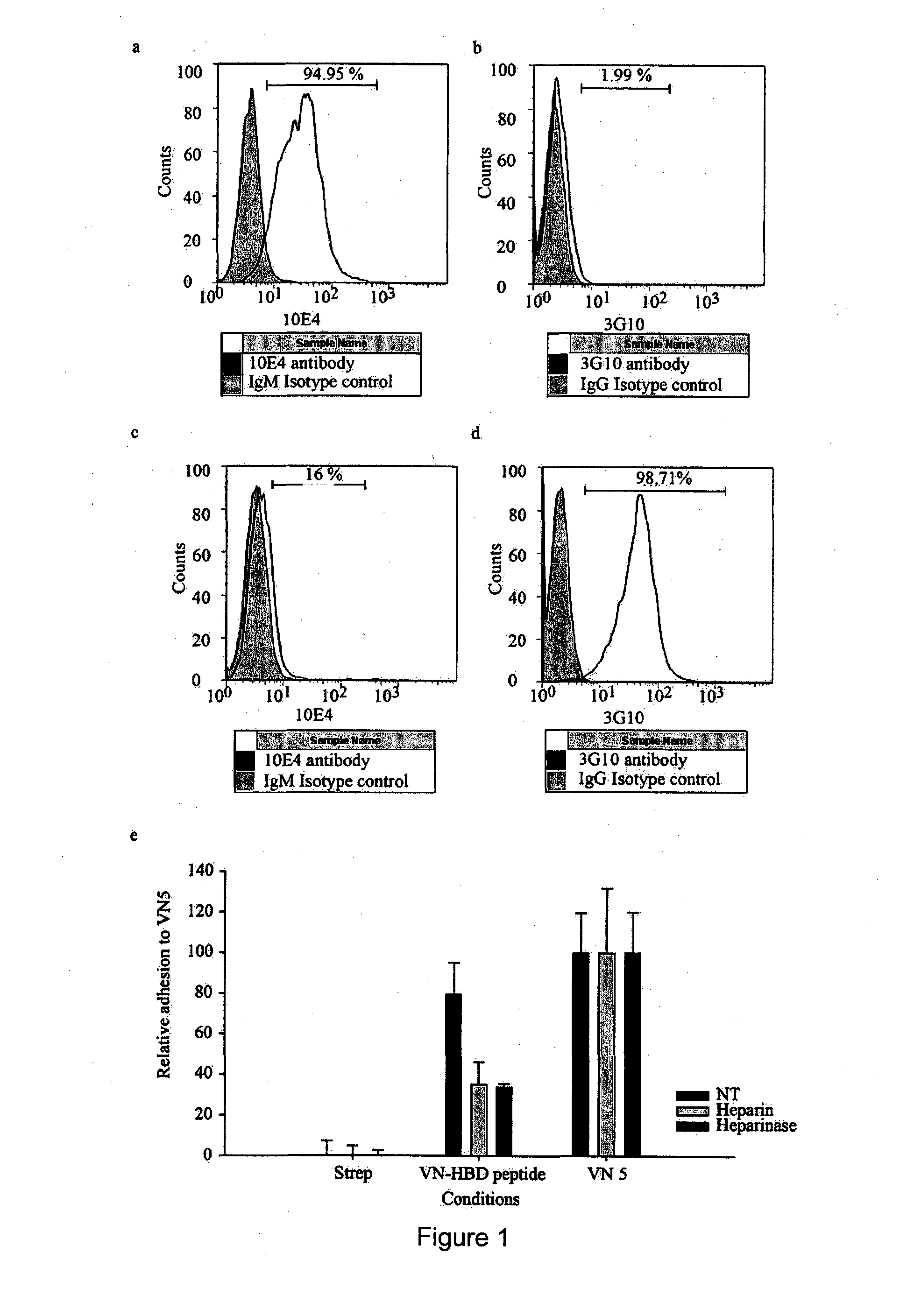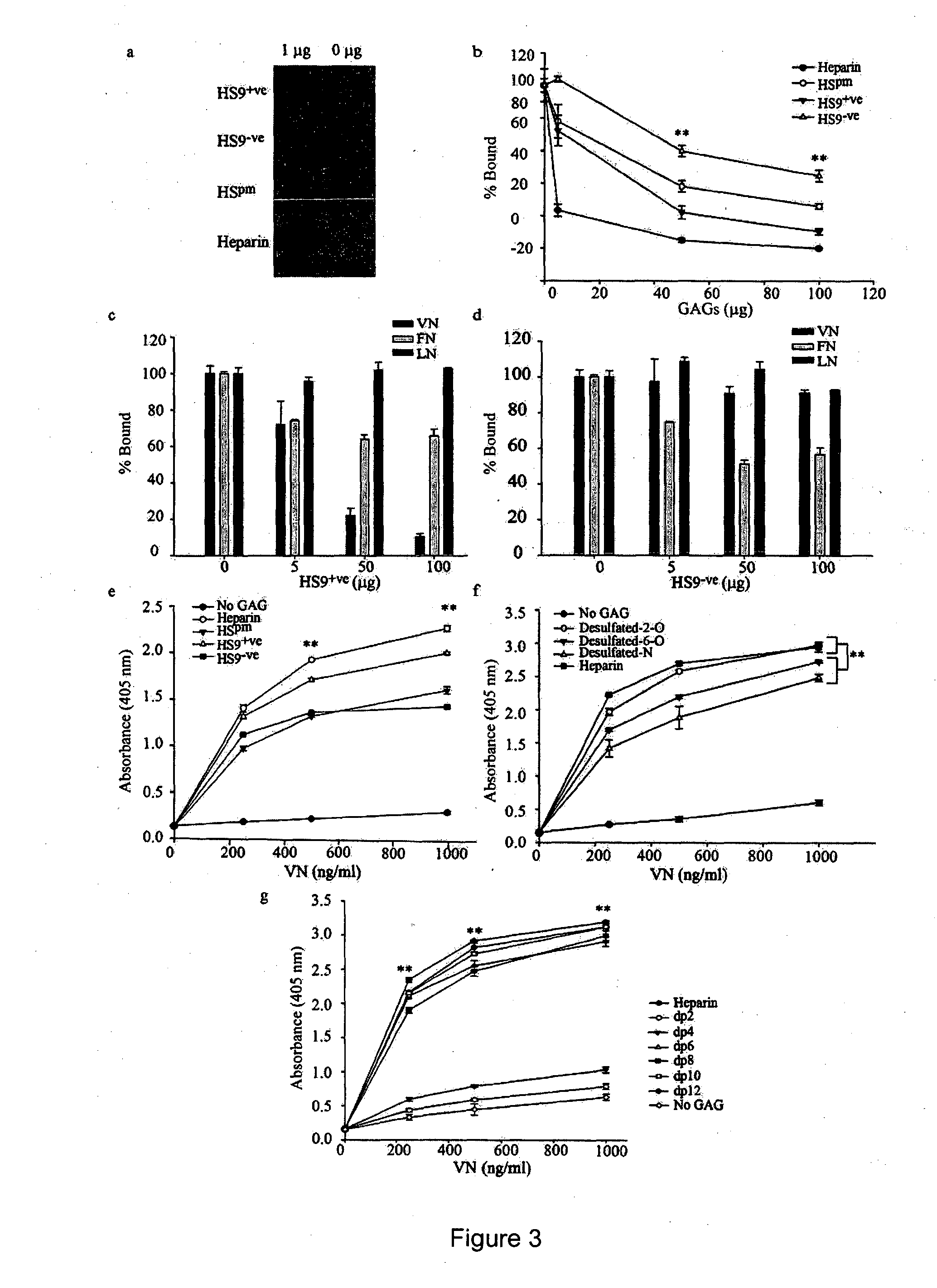Heparan sulphate
a technology of heparan sulphate and sulphate, which is applied in the field of heparan sulphate, can solve the problems of increasing the sales of stem cell therapy, difficult to keep these cells in their pristine state, and still much work to be done, and achieves the effect of maintaining sternness
- Summary
- Abstract
- Description
- Claims
- Application Information
AI Technical Summary
Benefits of technology
Problems solved by technology
Method used
Image
Examples
Embodiment Construction
Materials and Methods
Preparation of VN-HBD Peptide Surfaces
[0242]Following the VN5 platform in our earlier work [18], this study exploited an N-terminal biotinylated VN-HBD peptide (Biotin-PRPSLAKKQRFRHRNRRKGYRSQRGHSRGRNQNSRR) [48] synthesized by China Peptides Co. Ltd, China. This peptide, which lacks an RGD motif, was first immobilized onto streptavidin-coated surfaces to assess the attachment efficiencies of overlayed, heparinase-treated hESCs [15]. The streptavidin (Genescipt) was first reconstituted in PBS to 1 mg / ml stock and subsequently prepared as a 20 μg / ml working concentration. Bacterial grade 24-well plates (Beckon Dickinson) were coated with 625 μl of the working streptavidin concentration and incubated overnight at 4° C. Wells were then washed twice with PBS and 10 μM of VN-HBD peptide incubated for 2 h at room temperature, after which wells were washed again and 1 ml of mTeSR™1 media supplemented with 10 μM Rock inhibitor (Y27632) (Calbiochem) [49] added according to...
PUM
| Property | Measurement | Unit |
|---|---|---|
| concentration | aaaaa | aaaaa |
| concentration | aaaaa | aaaaa |
| pH | aaaaa | aaaaa |
Abstract
Description
Claims
Application Information
 Login to View More
Login to View More - R&D
- Intellectual Property
- Life Sciences
- Materials
- Tech Scout
- Unparalleled Data Quality
- Higher Quality Content
- 60% Fewer Hallucinations
Browse by: Latest US Patents, China's latest patents, Technical Efficacy Thesaurus, Application Domain, Technology Topic, Popular Technical Reports.
© 2025 PatSnap. All rights reserved.Legal|Privacy policy|Modern Slavery Act Transparency Statement|Sitemap|About US| Contact US: help@patsnap.com



